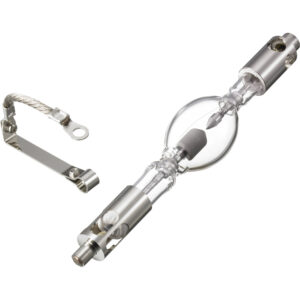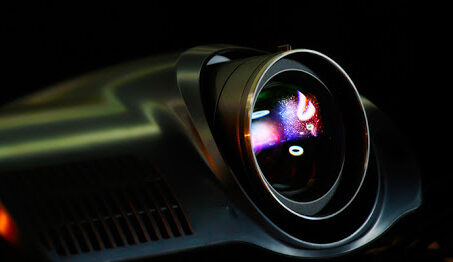Image flickering is the visible change of a projector’s brightness as it goes through its refresh cycles. This is a common problem on DLP projectors that use bulbs that wear out with use.
A projector may flicker for various reasons that include;
- Unstable power supply
- The bulb reaching its end cycle
- Dust builds up on the color wheel
- A low refresh rate
- Resolution issues
If this is a problem you have experienced, here’s how to diagnose it.
1. Unstable power supply
When using eco-mode on your projector, less voltage is applied to the lamp causing the image to flicker. This is because the photons don’t get enough power to keep them excited.
If using eco mode is causing your projector to flicker, switch to a different mode and use it for a couple of hours to see if the issue is resolved.
2. A dying projector bulb
Most bulbs are built to withstand between 1,500 and 3,000 hours of use with some lasting for as many as 30,000 hours.
With continuous use, the anode and cathode on the projector’s bulb wear out. Also, the bulb may develop defects due to poor power supply filtering or issues with the magnetic field required for bulb operations. These defects may be expressed as flickering.
Usually, this is a sign of a dying lamp.
Most projectors have a red/yellow indicator that flashes when the bulb is dying. Physical damage or burns may also be visible.
Granted, you can check if a projector has reached or exceeded its life expectancy in the menu under the lamp life option.
If your projector is under warranty, the manufacturer should replace the lamp for you.
Consequently, if you are out of warranty, can get a replacement lamp, and are technically skilled, you could replace it yourself. The lamp consists of a bulb and plastic housing to hold it in place.
How to replace a projector bulb
- Purchase a compatible OEM or OEM equivalent lamp. An OEM equivalent uses an original bulb with generic housing.
- Before disassembling the projector, unplug it from the power source and let it cool off.
- Locate the lamp compartment using your user manual or online guides.
- Unscrew the compartment cover to reveal the screw holding the lamp.
- Use a soft non-abrasive cloth to gently lift the lamp, unplug the cables that run to it and place it to the side.
- Clean the compartment using a microfiber cloth to get rid of dust and dirt.
- Put the replacement lamp into the compartment in the correct orientation and re-connect the cables before you lodge it back in.
- Screw the lamp and compartment cover to the projector and reset the lamp timer to zero.
If the bulb was the root of the problem, lamp replacement should solve the problem.

3. Ground loops
Flickering on a projector can be a visual symptom of signal noise in the ground circuit (ground loop).
Ground loops occur when there is more than one conductive path between the ground terminals of the projector and other equipment forming a close conductive loop. This could be a loop between your source and the projector.
You can use a cheater plug (2-prong) to bypass the projector’s ground to see if the flicker goes away. This is a temporary solution that should only be used for troubleshooting.
By connecting your projector and your source (receiver, Blu-ray player, etc) to a single ground point. You could do this by connecting your AV equipment to a single outlet using a surge protector power strip.
4. Loose connections
If you are experiencing flickering, you should ensure that you have no loose video or power connections.
A faulty cable may also cause issues for you. In this case, swap out the video cable.
I would also recommend using a high-speed HDMI cable (if possible) for the projector other than VGA or DVI cable.
5. Faulty video source
A problem with the video source could cause a projector to flicker. This could be a fault with the source’s power supply unit or video card.
Flickering could also occur if there is a mismatch of video formats between the source and the projector. For example, if the output on your source is WXGA select WXGA on your projector’s menu options.


